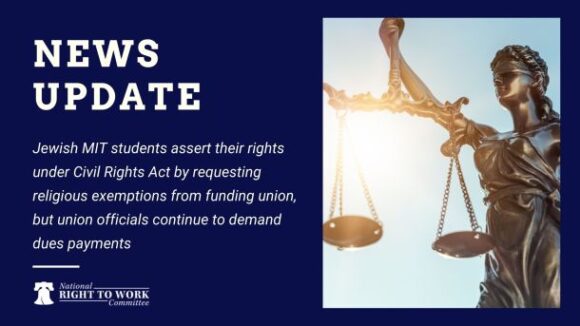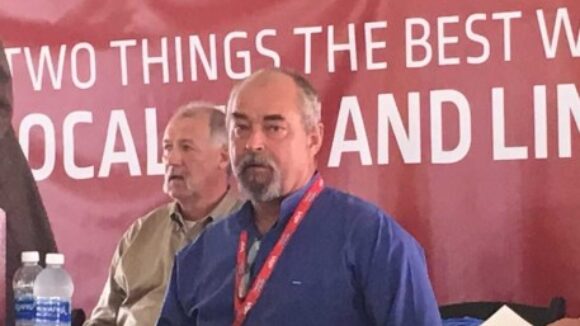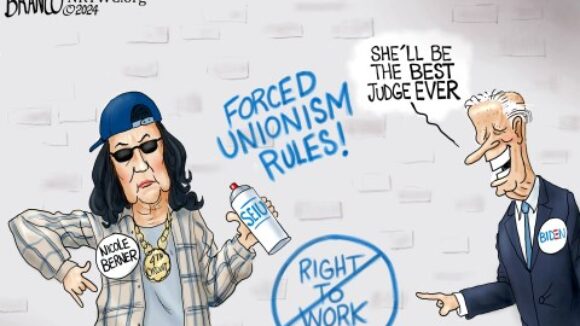Amidst a series of setbacks at both the ballot box and the court house, the fate of the compulsory union movement may depend in large measure on the outcome of two lawsuits currently pending in Indiana. In early 2012, Governor Mitch Daniels signed into law a bill that made Indiana the nation’s twenty-third right-to-work state. Unions have filed two challenges to that law, one each in state and federal court. The outcome of those lawsuits will help to determine whether Indiana remains a right-to-work state and whether other states follow Indiana’s lead.
In its first few months of operation, the right-to-work law has, by almost any measure, helped to attract new businesses to Indiana. Indiana has only 2.2 percent of the nation’s population. In April, the first full month after the law took effect, more than one in eight jobs created around the country were created in Indiana – more than in states several times the size of Indiana. According to the state’s economic development arm, almost fifty out-of-state companies cited the right-to-work law as one reason that they were considering opening a location in Indiana.
Nevertheless, the right-to-work law is now facing legal challenges in state and federal court, both from affiliates of the AFL-CIO. The federal lawsuit throws a number of charges at the law, most focused on alleged violations of the U.S. Constitution. The union argues that the law violates the First Amendment, Equal Protection Clause, Ex Post Facto Clause, Contracts Clause, Takings Clause, a federal statute, and the state constitution. Among other complaints, the union alleges that the law interferes with existing contracts and restricts its ability to spread its message.
In moving to dismiss both lawsuits, the state pointed out that the right-to-work law does not require unions to do anything. As the state explained, it is the NLRA, a federal law, that requires a union to service non-members. The union is not “required” to service anyone – if a union does not want to represent non-members for free, it need not seek to become the exclusive representative for a bargaining unit that includes non-members. Unions are free to advocate to employers for their members, and to engage in lobbying and other activities, whether or not they are exclusive bargaining representatives.
With the help of the National Right to Work Legal Defense Foundation, several employees have filed amicus briefs in support of the state. These employees point out that courts have upheld similar laws in other right-to-work states. The employees also argue that federal law preempts the union’s argument. In other words, if the state’s constitution mandated that non-members must pay dues, then the state constitution would be preempted by federal law, which gives employers the option not to agree to forced unionism requirements, employees the option to deauthorize such requirements, and states the option to prohibit them.
The outcomes of the two lawsuits in Indiana, both pending in trial courts, will help determine the future of the union movement. Indiana lies in the heart of the central Midwest – a/k/a the “Rust Belt” – the historical heart of the union movement. Other Midwestern states, including Ohio and Michigan, are already considering right-to-work legislation. Moreover, unions are already on the defensive on multiple fronts across the country. In the aftermath of the unions’ failed effort to recall Governor Walker in Wisconsin, several other states are now considering ways to restrict public sector collective bargaining. In its recent decision in Knox v. SEIU, the Supreme Court questioned the “free rider” rationale for forced unionism and sent a strong signal that, in the near future, public unions will have to persuade non-member employees to affirmatively “opt in” to fund the unions’ political speech, as opposed to the current system, in which non-member employees have to affirmatively “opt out” of funding such speech. Another loss in Indiana could prove the straw that broke the (unionized) camel’s back.


